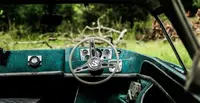Visual Relationship Detection with Language Priors
A study conducted in the UK from 2009 to 2010 by leading scientists explored neonatal resuscitation practices in various neonatal units, aiming to assess adherence to international guidelines and identify differences between tertiary and non-tertiary care providers...
Read on arXiv Lorem ipsum dolor sit amet, consectetur adipiscing elit. Sed do eiusmod tempor incididunt ut labore et dolore magna aliqua. Ut enim ad minim veniam, quis nostrud exercitation ullamco laboris nisi ut aliquip ex ea commodo consequat.
Lorem ipsum dolor sit amet, consectetur adipiscing elit. Sed do eiusmod tempor incididunt ut labore et dolore magna aliqua. Ut enim ad minim veniam, quis nostrud exercitation ullamco laboris nisi ut aliquip ex ea commodo consequat.
One Sentence Abstract
This study proposes a model that trains individual object and predicate visual models, utilizes language priors from semantic word embeddings, and localizes objects in predicted relationships to improve content-based image retrieval by predicting multiple relationships per image, even with a few examples for each.
Simplified Abstract
Researchers are working on a new way to understand how objects interact with each other in pictures. Think of it as trying to figure out what's happening between two things in a photo, like "man riding a bicycle" or "man pushing a bicycle." There are lots of different interactions, but most of them don't happen very often. In the past, researchers focused on only a few interactions because it was hard to get enough examples of all the different interactions.
This new approach is different because it trains models to identify objects (like "man" and "bicycle") and actions (like "riding" and "pushing") separately. Then, it combines those models to predict many interactions in a single photo. To make the predictions better, the researchers use language clues from how words are related in sentences. This helps the model learn which interactions are more likely to happen.
The result? This method can learn about thousands of different interactions from just a few examples. It also helps identify where in the photo each interaction is happening. Lastly, understanding the relationships between objects in photos can improve how we search for and find images that we're looking for.
Study Fields
Main fields:
- Visual Relationship Detection
- Semantic Word Embeddings
Subfields:
- Predicting relationships between objects
- Object and predicate frequency
- Model training and combination
- Language priors and likelihood finetuning
- Scalable relationship prediction
- Object localization through bounding boxes
- Content-based image retrieval improvement
Study Objectives
- Develop a model for visual relationship detection that can predict multiple relationships per image
- Train visual models for objects and predicates individually to overcome the limitation of insufficient training examples for all possible relationships
- Utilize language priors from semantic word embeddings to fine-tune the likelihood of a predicted relationship
- Demonstrate the model's ability to scale and predict thousands of types of relationships from a few examples
- Localize the objects in the predicted relationships as bounding boxes in the image
- Investigate the potential improvement of content-based image retrieval through understanding relationships
Conclusions
- The authors propose a model that trains visual models for objects and predicates individually, then combines them to predict multiple relationships per image.
- They leverage language priors from semantic word embeddings to fine-tune the likelihood of a predicted relationship, allowing the model to scale to predict thousands of types of relationships from a few examples.
- The model also localizes the objects in the predicted relationships as bounding boxes in the image.
- Understanding relationships can improve content-based image retrieval.
References
- University of AI
Received 20 Oct 2011, Revised 9 Dec 2011, Accepted 5 Jan 2012, Available online 12 Jan 2012.





